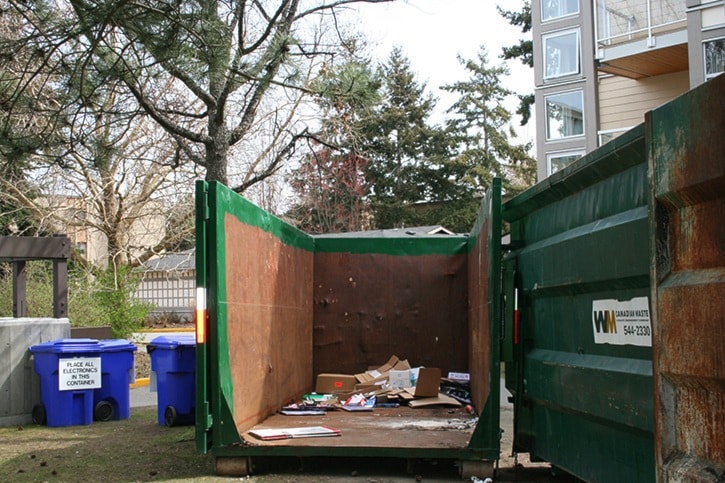There are some inevitable activities that come with the impending completion of another post-secondary school year. All-night study sessions, end-of-the-year parties, and a surge in the number of for-rent basement suites on CraigsList, to name a few.
But the Capital Regional District on Friday launched a campaign of its own in hopes of putting a stop to another inevitable.
"Students certainly aren't the whole problem, but as people are moving off the Island, there is often tons of waste left at the curb," said Russ Smith, senior manager of environmental resources management with the CRD. "A lot of times it ends up in the situation where municipalities are left picking it up and taking it to landfill."
Mattresses, televisions, couches, nightstands, lamps and shelving units are regularly abandoned curbside for anyone to take – but when municipal garbage crews wind up collecting it, it's a cost to taxpayers.
Smith says the 13 CRD municipalities spent roughly $330,000 on labour, trucks and tipping fees, collecting 650 tonnes of abandoned and illegally dumped roadside junk in 2012.
Additionally, unusable items abandoned at charity doors ultimately cost that organization to get rid of it. The waste also has an impact on the environment.
"Illegal dumping can negatively impact wildlife, plants, our ecosystem," said Oak Bay Mayor Nils Jensen, chair of the CRD's environmental services committee.
Mike Ippen, Saanich's manager of public works, says illegal dumping extends beyond household furniture.
"A lot of it is garden-related: rocks, grass clippings, old bushes that should be taken to the (public works) yard, but are dropped in cul-de-sacs or parks," he said.
The CRD's Abandoned Waste campaign aims to reduce the amount of improperly discarded household junk by 15 per cent this year through educating the public. The campaign focuses on the three Rs that everyone knows as a way to divert waste from the landfill: reduce, reuse and recycle.
The CRD recommends the best way to reduce abandoned waste is by finding an alternative to just leaving it outside. If you want to get rid of it furniture for free, post a free online classified ad (usedvictoria.com for instance), or consider donating the item to a charity.
If the item can't be reused, recycle the item through its proper channels. The CRD's myrecyclopedia.ca offers information on recycling virtually all unwanted household items, instead of having them sent to the landfill.
As part of the campaign, the CRD is giving away Junk-It Kits to help make it easier for people to recycle, rather than abandon, their goods. The kits come with a tarp, a bungee cord and information on where and how to properly get rid of your waste.
To get a kit, you'll need to sign up to commit to reducing abandoned waste.
"Many people (abandon their waste) out of the goodness of their heart, leaving these out hoping they can be use by someone else," Jensen said. "But a very significant amount of this waste has to be picked up by municipal crews at a significant cost."
For more information on the campaign, visit crd.bc.ca/waste/dumping.htm.
kslavin@saanichnews.com
